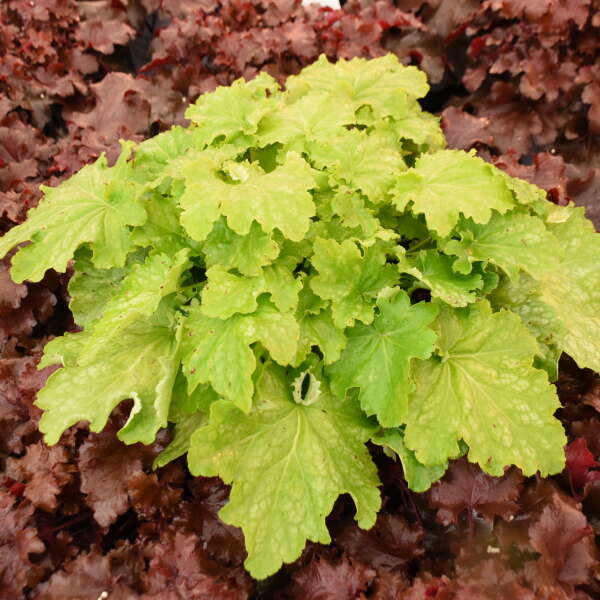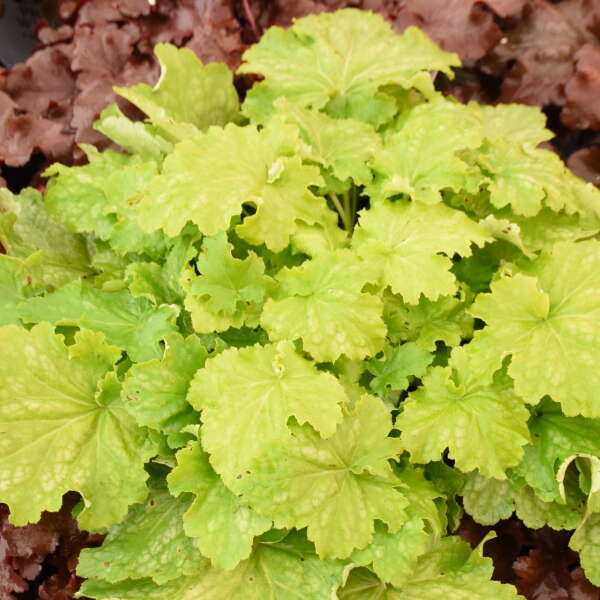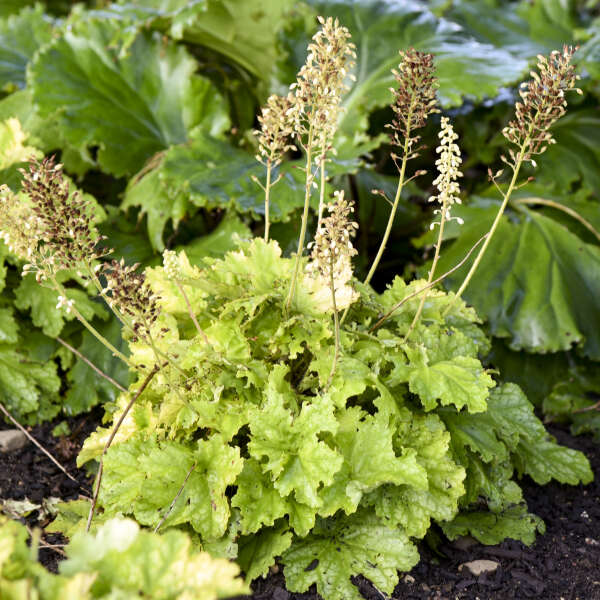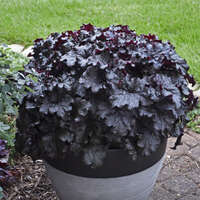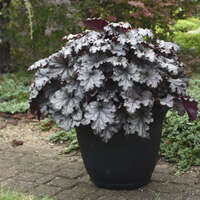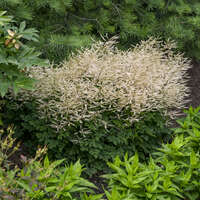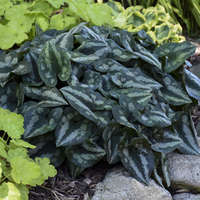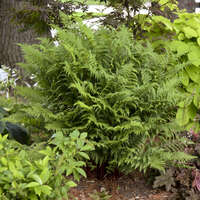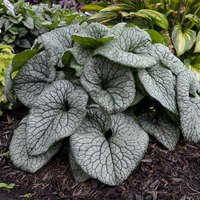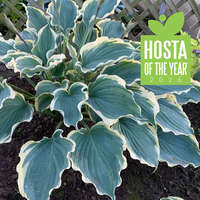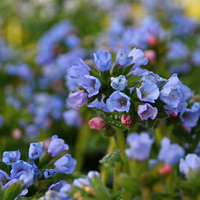Heuchera 'Ball Gown' CPBRAF PP35429
DRESSED UP® Series


Common Name: Coral Bells
The chartreuse companion to last year's breakout sensation 'Evening Gown'! Similar to its dark leaved compatriot, 'Ball Gown' has large, heavily ruffled leaves and excellent landscape performance. However, this plant should not be limited to only the garden bed as it has excellent presence in both mixed and mono containers. Ensure good drainage for the best performance.
Compared with PRIMO® 'Pistachio Ambrosia', 'Ball Gown' has much more scalloped leaves with a slightly serrated margin and creamy white instead of pink flowers.
Coral bells are easy to grow and blend easily with most other perennials in the landscape. Because of their low, mounding habit, they are often used as edging along paths or in containers. Try cutting a few of the tall flower scapes for fresh bouquets.
